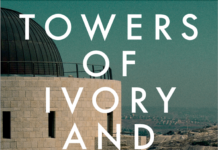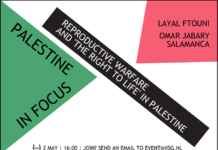Michael F. Brown
The Electronic Intifada / July 10, 2023
Precision at The New York Times doesn’t matter in service of the Israeli occupation.
In a 6 July article on the acquittal of the Israeli police officer who killed Palestinian Iyad Hallaq, there’s a caption claiming Israel’s wall “roughly divides Israel from the West Bank.”
It reads in full: “A mural showing Mr. Al-Hallaq on the separation wall, which roughly divides Israel from the West Bank, in Bethlehem.”
The Electronic Intifada emailed Jerusalem bureau chief Patrick Kingsley Friday regarding the misleading caption and included Aaron Boxerman, the author of the article, on the thread.
Boxerman responded a short time later.
“Given that we said that it ‘roughly divides’ Israel from the West Bank, rather than simply separating the two, we’ll leave it as is.”
Of course, The New York Times also didn’t correct an article from 2017 that specifically used the term “separates.”
“The elusive British street artist Banksy has decorated the interiors of the Walled Off Hotel, a nine-room guesthouse in the West Bank city of Bethlehem whose windows overlook the barrier that separates the territory from Israel.”
This sentence about Banksy and the “barrier that separates the territory from Israel” was specifically raised in the email to Kingsley and Boxerman about the caption.
“Roughly divides” or “separates” and yet The New York Times isn’t correcting either one. Israel is taking Palestinian land and The New York Times is abetting with misleading reports from the region.
NYT and Karmi family home
Perhaps the next time passersby are in Jerusalem they’ll claim 10 percent of the newspaper’s residential space in the Qatamon neighborhood of West Jerusalem – about the same percentage of territory as Israel’s separation barrier is anticipated to take in the occupied West Bank.
After all, a rough division of what doesn’t belong to the passersby is too insignificant to quibble over, especially with just 10 percent at stake.
The matter would, of course, be complicated by the fact that the newspaper is exercising “air rights” above the childhood home of Ghada Karmi, now an activist and author living in Britain.
If anyone has rights, surely it’s Karmi.
In an emailed statement, Karmi told The Electronic Intifada: “The New York Times’ editors state that the separation wall ‘roughly divides’ the West Bank from Israel, when in reality the wall is mostly built on Palestinian land. This attitude shows the NYT’s basic disrespect for Palestinian rights – hardly surprising, since their bureau chief’s residence in Jerusalem sits on top of my childhood home.”
Karmi added, “Whether it’s 1967 territory with the wall or 1948 territory with my childhood home, they are complicit in Palestinian dispossession.”
When The Electronic Intifada asked Danielle Rhoades Ha, who was then, pre-promotion in February 2022, the vice president for communications at The New York Times, whether the newspaper “intends to return the upper level to the rightful owners,” she provided no response. She did, however, respond to a different question on Israeli apartheid.
Nor has she answered a follow-up question asked Friday about Karmi’s home.
The silence on Karmi’s childhood home indicates that the newspaper is uninterested in restorative justice for Palestinians – or even compensation as a minor and temporary step in light of the unwillingness of the Israeli government to comply with international law and accept the right of return for Palestinian refugees to their homes and lands.
This failure comes despite the fact that my colleague Ali Abunimah reported in 2010 that David E. McCraw, vice president and assistant general counsel for the newspaper, “acknowledged in a follow-up conversation that as a general principle of property law, the ‘air rights’ of a property – the right to build on top of it or use (and access) the space above it – belong to the owner of the ground.”
Words have meaning. If The New York Times is going to cover Israel’s seizure of Palestinian land then it has a responsibility to do so clearly and not obfuscate the facts.
Michael F. Brown is an independent journalist












